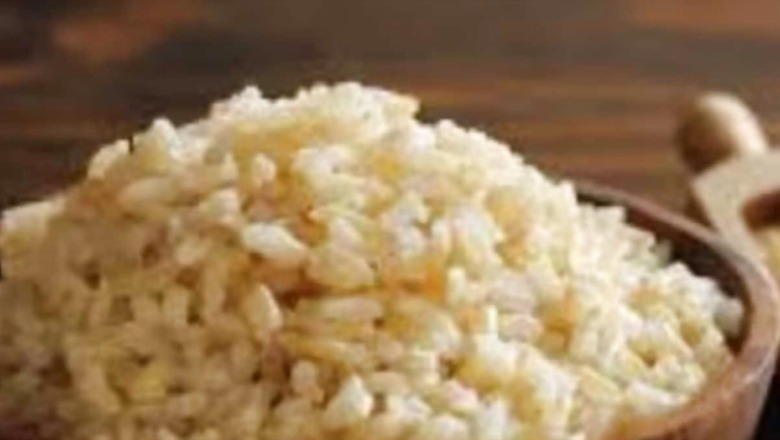
views
Rice is the staple diet of India. Rice lovers usually don’t skip a day without eating rice. Some people eat rice in the place of chapati in their regular meals. Preparing rice is quite easier than chapati. The majority is shifting from white rice to brown rice for better health benefits. Unlike white rice, only the outer husk is removed and not polished. Brown rice has more nutrients than white rice. Brown rice has a low glycemic index. It keeps the blood sugar levels at a normal level. They contain many important nutrients like dietary fibre and potassium, which reduce the risk of heart disease and stroke. With so many nutrients in brown rice, there are also side effects which you need to be careful about.
Excess fibre
Brown rice is very high in fibre content. Excess fibre can cause bloating, constipation, flatulence and gas problems. If the fibre content is increased, it can cause blockages in the intestines and cause abdominal pain.
Threat with arsenic
Brown rice contains 1.5 times more arsenic than white rice. Arsenic is a heavy metal. It is toxic to the body if taken in excess. It can also result in miscarriages in pregnant women.
Weight loss
Eating brown rice can help you lose weight. This reduces the body mass index but some people may lose weight rapidly and suffer from illnesses. According to a study by the National Library of Medicine, people who ate more whole grains like brown rice lost weight faster than those who ate other foods.
Digestive problems
The bran, germ and endosperms are not removed in the preparation of brown rice. Hence, it contains more fibre, unsaturated fatty acids, proteins, minerals, vitamins and starch than white rice. If the consumption of brown rice increases, some people may experience digestive problems. It contains an antinutrient known as phytic acid which makes it more difficult to digest. While phytic acid may offer some health benefits, it also reduces your body’s ability to absorb iron and zinc from food. Soaking rice before cooking can help retain some of the nutritional value.




















Comments
0 comment